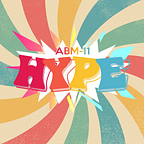Dance and The Brain
By: Lawrence Gian Lee
From the past years of learning, we have learned something about various forms of arts — such as music, literature, sculpture, theater, painting, dance, etc. But now, let us focus on what dancing is all about and its purpose. Dancing is a form of art, collaborating with a person’s feelings, thoughts, and emotions. I’ve seen that through online platforms, many individuals decided to engage themselves in dancing while some are still enhancing their skills. During 3300 BCE, dance became a part of people’s lives. It started during the ancient civilization in the Middle East. They usually do it to express their praise, worship, and adoration. Does dance have an impact on our brain? Indeed — there is. Usually, a person who loves to dance has a good memory or memorization skills. Practicing and performing had taken part in their lifestyles, and indeed, their brains are continually improving and adapting to how they move and express themselves. We need to know that dancing is not just a pastime, but it also impacts our well-being because everything starts with our brains. It is vital to see dancing as something that makes a person better.
The most significant part of our brain is the cerebrum, which controls our movement, memory, and sensory. As I have mentioned, the brain is the primary source of the actions we make. A dancer would not create a move without the brain processing it — the emotion in dancing would also not be expressed without it being connected to our brain. Let’s go back to what we have talked about at the start, which is the daily training in dancing. But first, let us not see dancing as something complicated; it is not done by intelligence or talent — our desire produces it. So we can observe the impact of dancing on the brain only to those passionate about dancing. Those skilled people went through a long process to become fast learners whenever they are. Those who were training themselves every day had allowed their brain to control their bodies asynchronously. To keep it short, a person can do different body movements at a time (ex. the move of the feet becomes independent from the action of hands, head, or shoulders). And that’s how dance creates structural implications in the brain; it delivers, processes, and analyzes the information immediately.
To sum up, everything that has been stated, dancing or moving is accompanied by the brain. They have a relationship actually — the brain helps the body to move, and the move of the body helps the brain to function sharply. Dance contributes not just to the body’s fitness but also releases endorphins— a hormone that makes us happy. As a final impression, I would say that dance is beneficial; moving is beneficial.
So don’t stop moving; keep on going.
